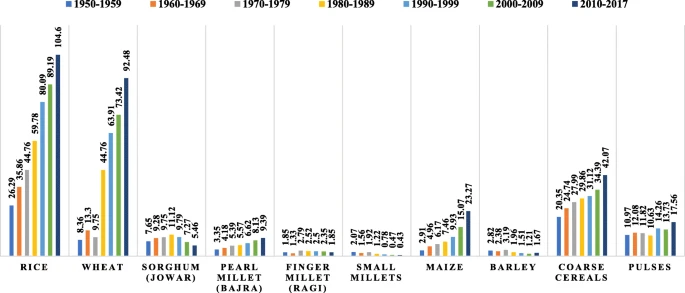
Types of crops planted in India by decade, 2014, Bio Med Central
The implementation of HYVs saw the rise of monoculture farming practices along with the usage of large amounts of chemical fertilizers and pesticides. Over time, this exacerbated soil degradation, and the chemicals used led to increased water pollution.
"Chapter 1 | The Man Who Tried to Feed the World" 2020, PBS

Types of crops planted in India by decade, 2014, Bio Med Central
Across the world, a few types of HYVs replaced diverse types of crops, devastating agro-biodiversity. Traditional variations were abandoned and genetic diversity within crops was lost.
HYVs themselves were not expensive, however, they required additional agricultural equipment and improvements, such as new irrigation systems. These additional requirements were expensive and unavailable to smaller farmers. Large farmers, who could buy the requirements and utilize HYVs, prospered and pushed out the small farmers.
Pesticide usage in India, 2017, FAO
HYVs were the first successful widescale attempt at manipulating crops to improve their yield and usefulness. The idea of manipulating crops to increase their yield did not end with HYVs, but continued to develop, eventually turning into the field of bioengineering and GM crops. HYVs were created through selective breeding, but GM crops were created by implanting choice genes into crops through genetic engineering.